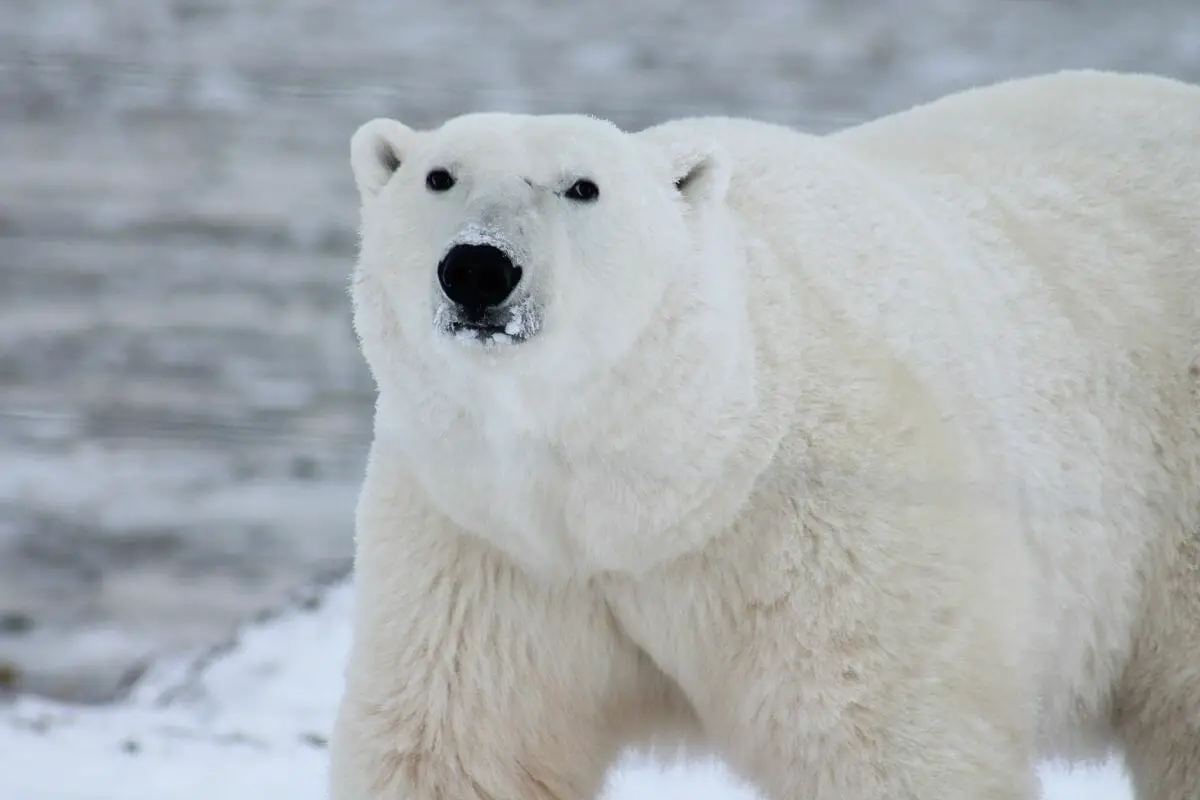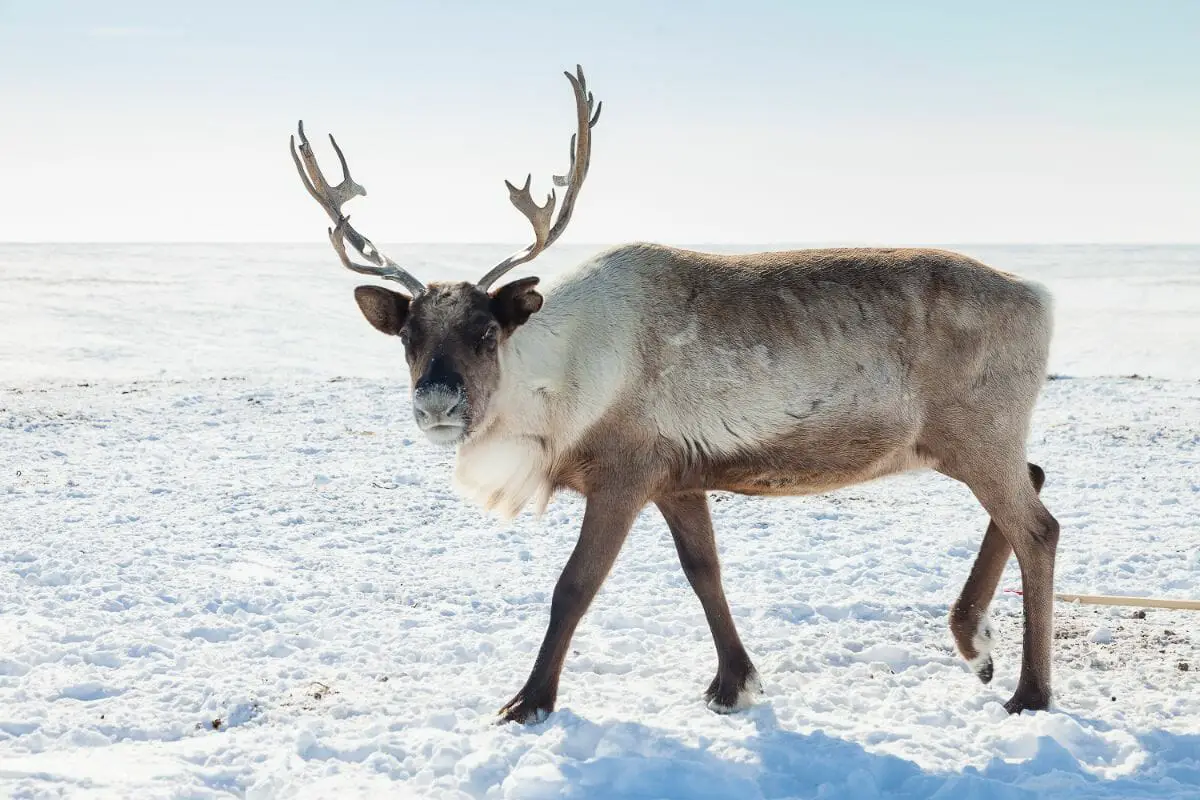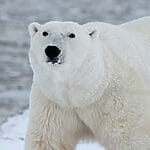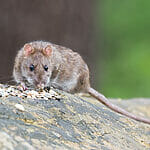For humans, the cold weather is a take-it-or-leave-it situation.
Whilst there are those of us that are born in colder countries, we don’t necessarily have to be completely adapted to the weather in order to survive thanks to being able to dress up warmly, stay inside a warm area or consume hot food and drinks got some internal warmth.

The same can’t be said for animals, who must adapt in order to survive in the harshest weather conditions, including the extreme cold.
With this in mind, we are going to be looking at ten animals that are able to survive and thrive in the unforgiving terrain of some of the coldest places in the world.
1. Polar Bear
The well-known, carnivorous mammal that is the polar bear is known for its large size, white coat- which is used for camouflage- and huge size, with adult polar bears weighing between 350 kg and a massive 700 kg.
The polar bear is adapted to survive in the most frigid weather conditions, in terms of both its build and its behaviors.
Their coat is thick, long, and heavy, designed to keep the bears warm by trapping in a layer made up of insulating air. Their coat is also oily, able to keep away moisture when the bears swim in freezing waters.
Below their skin, they have a layer of blubber which also helps protect them from the cold, whilst their huge paws feature furry soles to allow them to walk on slippery ice and cold snow (Also check out What Animals Live In The Snow).
2. Snow Leopard
This large cat is native to Central Asia and is able to stay warm within the freezing semi-alpine and alpine regions of the continent thanks to their stocky bodies and thick fur.
Snow leopards also have a particularly flexible and long tail, which can help them keep their balance on the cold and rocky terrains, but also has a large amount of fat within it to keep them warm.
A snow leopard definitely looks different than the other leopard types found on the savannah.
3. Arctic Fox
Found throughout the Northern Hemisphere in Arctic regions, the arctic fox- also called the polar fox- is able to survive in incredibly low temperatures, as low as -58 degrees Fahrenheit.
They do this by burrowing into the ground or into the snow, whilst their thick and insulating fur coat is able to preserve their body heat by trapping an air layer beneath it.
As well as this, the arctic fox has an incredible sense of hearing to avoid predators, a snow-white coat for camouflage, and furry paws for extra warmth.
Their bodies are also designed for protection against the cold, thanks to having a short muzzle with small ears and a round body.
4. Musk Ox
The Musk Ox- mostly seen in Greenland and Arctic Canada- has not one, not two, but three coats- an outer layer, a secondary layer, and an insulating layer- that keep them warm in freezing temperatures.
Their hooves are also designed to dig through ice and snow in order to find food, whilst their long and curved hooves provide defense against predators.
5. Reindeer
Also known as the Caribou, Reindeer are associated with the cold, holiday season for a reason! Living in various cold regions, such as the Arctic and Siberia, the Reindeer has a hugely warm and heavy coat that keeps them toasty.
Their hollowed hooves and huge antlers are also designed to aid them with their survival in colder temperatures, offering protection from predators and giving them the ability to dig through snow and ice to find food, much like the aforementioned musk ox.

6. Arctic Hare
A thick coat and shorter ears than your average hare offer some protection from the cold for the arctic hare, whilst their ability to burrow underground also allows them to escape the coldest temperatures.
To survive, the arctic hare will dig in the snow to find twigs and plants to eat. In terms of protection against predators, their white coat creates a camouflage effect but also changes color according to the seasons.
7. Walrus
Usually found in shallow waters above the continental shelves of the North Pole in arctic seas, the Walrus is known for their huge, blubbery body which keeps them thoroughly protected in the cold, even when the temperatures of Arctic water go below freezing.
Walruses are also known for their long tusks, which can be used to pierce ice from underneath to create breathing holes, as well as to form general ice holes that allow them to climb out of the water with ease.
8. Beluga Whale
The Beluga whale is known for its white coloring, which allows them to blend into their native Subarctic and Arctic seas.
Belugas preserve their body heat thanks to their lack of a dorsal fin, which reduces their body weight and lets them maintain their warmth with ease.
These whales also have a huge amount of blubber to help them survive in freezing cold waters.
9. Leopard Seal
Native to the Antarctic, Leopard Seals have a surprisingly muscular body and strong jaws, which allow them to hunt in extreme temperatures.
The pattern of their fur – with light bellies and a dark top- camouflages them from both predators and prey, whilst their thick and dense blubber layer offers the necessary insulation for freezing cold waters.
10. Narwhal
This instantly recognizable whale species- found in the Arctic region- is similar to the Beluga whale in that it also doesn’t have a dorsal fin, which allows them to preserve their body heat more easily.
Their blubber layer also lets them stay warm even when swimming in the coldest of waters.
Final Thoughts
So there you have ten animals that are able to survive in some of the coldest temperatures, be it on land or in the sea!
Most animals that are able to survive in these harsh conditions have either very thick coats or blubber layers that keep them insulated, which they have adapted over thousands of years of evolution, making them a prime example of the incredible way that so many creatures of the animal kingdom can adapt to their environment.









